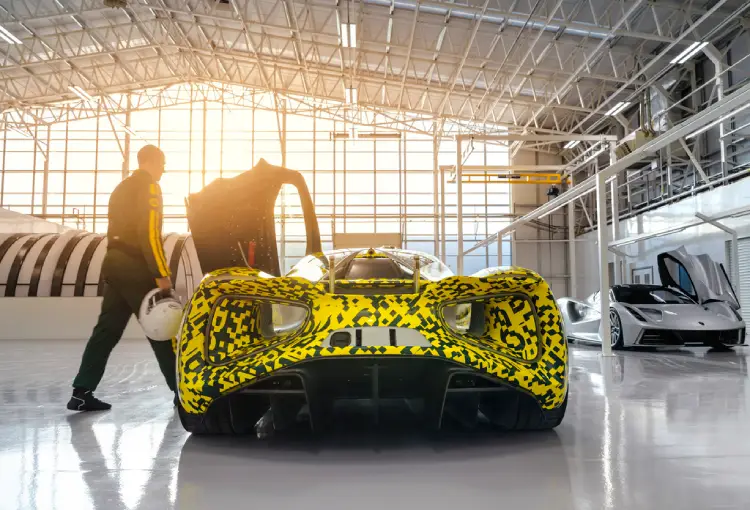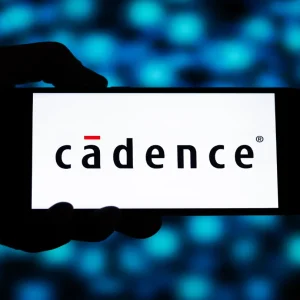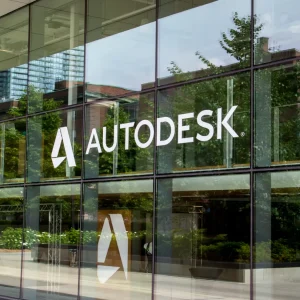
When it comes to British automotive manufacturers, few names are more evocative than Lotus.
From the heady days of Formula One dominance in the 1960s and 1970s, to the appearance of the Lotus Esprit in James Bond films The Spy Who Loved Me and For Your Eyes Only, the car maker and its distinctive yellow and green insignia became a byword for 20th-century performance and engineering excellence.
This heritage is not lost on Lotus IT director Ivan Sarti.
“My dad was into motorsports and we used to go to the motor shows at Earl’s Court and the racing at Crystal Palace,” he says. “I remember having a die-cast model of the Lotus Europa — it’s such a pedigree name and, without wishing to sound too twee, I’ve always had an affection for the brand.”
A heritage name with a big future

Lotus has ambitions to be more than a heritage company gathering dust in the history books. Since being purchased by Chinese automotive giant Geely, it has launched the Evija, the world’s first all-electric hypercar, worked on Team GB’s Tokyo Olympics bike, and announced plans to redevelop its headquarters at Hethel in Norfolk.
Lotus IT director Sarti is tasked with keeping the company’s digital systems on the road. A self-confessed early-adopter of technology (“I started fiddling around with computers at home in the 1970s”) he spent his early career in software development and Unix systems, including a spell at a then-little-known vendor called Dell.
“I was there in the very early days,” he recalls. “They were already established in North America, so we saw the potential but I don’t think we appreciated quite how dominant they would be, the market share they would end up with, or indeed how big the market itself would become. It was an exciting time.”
The chance to work for Lotus came after several years working for Tata and consulting for big-name automotive companies such as Chrysler and Jaguar Land Rover. Having joined in January 2019, Sarti oversees a core team of 50 IT staff servicing the needs of 1,500 Lotus staff working across five sites, as well as liaising with colleagues in the US and China.
“We have full concept to realisation capabilities at Lotus, which means we’re able to start with a blank piece of paper and have a product come out at the end,” he says.
“From an IT perspective, that means you need a whole load of stuff in terms of high-end workstations and software required to service the design capabilities we have, as all the software that’s needed to actually develop a concept into a working product. Then there’s the analysis work, which needs diagnostic software and the components that go into the car that need software engineering and data management tools, and that’s before you get to the standard office applications that any SME would have.
“So although our IT estate isn’t huge we have the same requirements as a Ford or Jaguar Land Rover, so though we’re a small team we have to be nimble, which is a Lotus thing anyway.”
The team that keeps the engine running

With such a broad range of capabilities in the organisation, it could be expected that his IT team must be quite specialised, but Sarti says the key to success is actually standardisation.
“We do have a limited number of specialists, but it also has to be about standardising and rationalising applications. When it comes to IT in the product development and manufacturing space you always have to try and avoid the risk that you have engineers who have grown up with a particular tool and because of that will love to bring that tool with them. If you allow that you can end up with three or four tools doing almost the same thing.”
So how do you encourage an engineer to ditch his favourite piece of software?
“Most of the time what we have to do is encourage them to rationalise their applications so they still get the functionality even if they have to do things in a different way,” Sarti says. “That can be a challenge, but what we can’t compromise on is the end result, the driving experience for our customers. When it comes to IT we can compromise a little bit about how we get to that end result.
“It tends to be a bit of a negotiation, and at times it can get heated because the thing with engineers is that they always want the best. But we have a team of business partners who do a great job positioning appropriate solutions.”
A total transformation

Lotus has been going through a transformational period since the Geely investment and the appointment of industry veteran Phil Popham as CEO, and that change has inevitably extended to the company’s IT systems.
“I’ve been involved in a few transformation projects, but rarely do you cover the full scope of transformation – culture, system, process and people,” Sarti says. “We’re doing all of that. The digital element started before I arrived, with the installation of new operating systems and server environments to set us up for transformation.
“Since then we’ve moved everyone over to Office 365, and then there’s been the recent event [Covid-19] where we’ve had to move everyone to Teams. We were looking for a vehicle to introduce Teams and greater collaboration and this has given us the opportunity to do it.
“At the same time, we are putting in a completely new enterprise resource planning system based on SAP. We’re putting in manufacturing execution systems to support manufacturing in higher volumes and new products. Systems to support third-party logistics, as well as products. New quality systems, new supplier relationship management systems. And we have also overhauled our HR system and deployed SuccessFactors.
“Everything is underway and I would suggest this digital transformation project will run into 2022, and from then on the focus will be on continuous improvement and making changes around the user experience and the changing engineering landscape, which might require us to consider technologies we’re not currently investing in.”
Sarti says Lotus uses a hybrid on-premises and cloud approach to infrastructure, with an emphasis on the former, having made significant Capex investments over the past couple of years.
“At some point I would like to virtualise all of our workstations, but at the moment we have many hundred physical workstations that do a fine job,” he says.
“We can make sure that people can get access to them wherever they are, and although over time it probably will make sense to virtualise that and put it into the cloud, there’s no benefit to us doing that at the moment.
“Some of our major applications are in the cloud, and there are economies of scale that mean that for small organisations putting in place capability to do things on-premises and having the physical space required is prohibitive. We have sufficient space and have already invested in a data centre which we will be going online towards the end of this year or early next year. So we’ll still have the physical capacity, but if we grow so big that it becomes more difficult to manage there are economies of scale going in the cloud.
“At the moment we have a choice of which way we can go and will probably end up with a mixture.”
Lotus IT director on embedding digital twins
The Evija, which will launch next year having been delayed by the pandemic, is the first in a new generation of vehicles designed and manufactured by Lotus. Just 130 of the cars will be built, and with a price tag of £2m you certainly wouldn’t want to curb its alloys outside the Co-Op. The all-electric vehicle has five driving modes for varying situations, and recently clocked a speed of 200mph on the Lotus test track at Hethel.
With modern cars featuring more embedded systems, Sarti says his team is grappling with the challenges this presents.
“Currently on a car you usually have 60 or 70 embedded systems, in future 300 is more likely to be the norm,” he says.
“This requires increased simulation and increased validation to make sure they work. You can’t validate the huge number of configurations that are part of these complex embedded systems in a physical environment, you have to use virtualisation.
“The automotive industry has been talking for a while about the digital twin, the ability to create a digital representation or prototype of a physical system and then be able to validate, compare the two and make sure they both operate as they should. This will have to become common.
“Within Lotus we now have a full simulation and analysis capability in terms of crash, aerodynamic and overall performance, and we are doing analysis which is literally taking us minutes, whereas before it would have taken a day. That’s something that has only happened in the industry in the last couple of years, and our new analysis environment went live this summer.”
The changing face of engineering
He believes the changes in the industry will lead to greater integration between IT departments and the engineering side of the industry.
“More engineers are going to find themselves working in a DevOps-type way, developing code, checking code, carrying out unit testing and validating it in virtual systems before loading it into the product,” he says.
“So I think there’ll be a greater overlap between engineering generally and current practices and IT operations. You’ll still have engineers looking after the performance and mechanical attributes of the end product, but there will have to be significant investment around electronic engineering and those embedded systems.
“Those of us in IT need to be reaching out and working much more closely with the engineering community to show them the way. We have experience in developing systems, going through a release process and rapidly getting it into production or live, sometimes successfully. We’ve also learned from our failures, and that experience can definitely be helpful.”






